Why does the washing machine hum or whistle when washing?
 Even in good condition, an automatic washing machine makes some noise and whistling, especially during intensive use, and this is completely normal. But there are times when the washing machine hums and rattles so much that it becomes annoying. In this situation, there may be a serious malfunction. In any case, this is a reason to think seriously and start looking for the cause of the unpleasant sound. We will talk about the causes of these sounds made by a washing machine, as well as ways to eliminate them, in this article.
Even in good condition, an automatic washing machine makes some noise and whistling, especially during intensive use, and this is completely normal. But there are times when the washing machine hums and rattles so much that it becomes annoying. In this situation, there may be a serious malfunction. In any case, this is a reason to think seriously and start looking for the cause of the unpleasant sound. We will talk about the causes of these sounds made by a washing machine, as well as ways to eliminate them, in this article.
Main causes of malfunction
Why does the washing machine spark, crackle, rattle and make a bunch of other different sounds that it is not supposed to produce? There can be quite a few reasons, and it is not always necessary to first of all pay attention to the moving elements of the washing machine, but first things first. Specialists with extensive experience in repairing automatic washing machines identify several of the most likely and common causes of the hum and whistle emitted by the “home assistant”; let’s look at them.
- Defective cuff of the washing machine hatch.
- The sound is caused by a foreign object getting into the washing machine and touching its moving elements during operation.
- The sound is caused by a defect in the moving elements of the washing machine (pulley, bearings, belt).
- The sound is caused by loosely dangling counterweights.
Note! When troubleshooting, move from simple to complex. There is no need to immediately rush to disassemble the tank and repair the bearings; first check the elements that are easier to reach; perhaps they are the cause of the unpleasant sound.
Hatch cuff defect
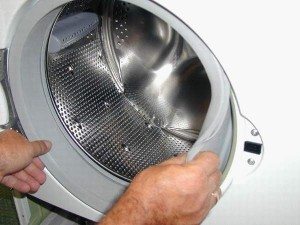 This reason may seem strange to some, like how could the cuff be due to the fact that the washing machine whistles and makes a grinding noise? In fact, the connection is direct! The cuff is a large rubber seal that is located around the hatch of the washing machine. Its task is to ensure that water from the tank does not spill out of the machine through the hatch. Under normal conditions, there is a small gap between the cuff and the edges of the rotating drum of the washing machine, and they do not touch each other, but it also happens differently.
This reason may seem strange to some, like how could the cuff be due to the fact that the washing machine whistles and makes a grinding noise? In fact, the connection is direct! The cuff is a large rubber seal that is located around the hatch of the washing machine. Its task is to ensure that water from the tank does not spill out of the machine through the hatch. Under normal conditions, there is a small gap between the cuff and the edges of the rotating drum of the washing machine, and they do not touch each other, but it also happens differently.
In cheap models of washing machines, the cuff may be installed haphazardly or not fit well at all. The edges of the cuff fit right into the drum, catching its edges, or worse, the cuff doesn’t really fit into the groove, which makes it difficult to close the hatch. In this case, if the machine is new, it is better to send it to a service center for repair under warranty. If this is not possible, then you can try to correct the situation yourself.
If the edges of the cuff catch the edges of the drum, then you can proceed as follows.
- Open the hatch cover and inspect the cuff more closely.
- Rotate the drum by hand to the right and left and see which part of the cuff catches the edge of the drum.
- If the clinging edge is small, insert fine sandpaper into the gap between the desired edge of the cuff and run the machine in spin mode. The rapidly rotating drum will erase the protruding part of the gum, and the cause will be eliminated.
- If the clinging edge of the cuff is more than 0.5 cm thick, then removing it is dangerous; it is better to replace the cuff with a new, more suitable one.
Important! Do not adjust the cuff using a knife. You won’t be able to cut the rubber band exactly, but you can completely break the seal of the washing machine hatch!
Unpleasant sounds caused by a foreign object
There has been a lot of talk from experts about checking pockets before putting things in the washing machine. However, still the same specialists continue to pull out nails, paper clips, coins, bra underwires, pins, coins and other small things from various “household aids.” Items that seem harmless at first glance are quite capable of sending your washing machine straight to the landfill.
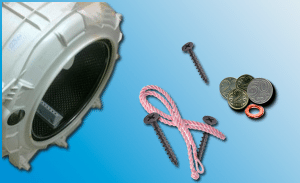 For example, if bra wire gets into the washing machine, or rather into the tank of the washing machine, it can get stuck in the heating element, standing sideways and clinging to the edges of the rotating drum, making a grinding and whistling sound. What does this mean? And this threatens with many problems. For example, a bone can break off part of the heating element or pierce the tank body, in general, an extremely unpleasant situation.
For example, if bra wire gets into the washing machine, or rather into the tank of the washing machine, it can get stuck in the heating element, standing sideways and clinging to the edges of the rotating drum, making a grinding and whistling sound. What does this mean? And this threatens with many problems. For example, a bone can break off part of the heating element or pierce the tank body, in general, an extremely unpleasant situation.
How to solve the problem if a foreign object has already gotten into the body of the washing machine? Everything will depend on what kind of item it is and where exactly it ended up. In any case, our task is to check, if possible, all the places and detect the unfortunate obstacle. What are we doing?
- We check the gap between the cuff and the edges of the drum, maybe a foreign object is stuck there, hence the grinding noise.
- We carefully examine the walls of the drum with a flashlight; perhaps through the perforated surface we will be able to see a foreign object lying in the tank.
- We open the back wall of the washing machine, remove the heating element, and through the resulting hole we remove all foreign objects from the tank.
- If you were unable to penetrate the tank through the heating element, you can try to do this through the drain pipe. We put the machine on its side, remove its bottom cover, loosen the clamps of the drain pipe and remove it.We reach into the tank with our hand and pull out all foreign objects from there.
Note! Sometimes the heating element is quite difficult to remove from the tank. In this case, you need to firmly grasp the base of its contacts and pull it out with rocking movements.
Worn bearings, pulley, belt or counterweight
If the washing machine has been in operation for several years, or maybe even decades, then answering the question of why it whistles, hums and makes other extraneous sounds is much more difficult. After all, all its parts are already quite worn out, and each unit can be the very cause of the malfunction.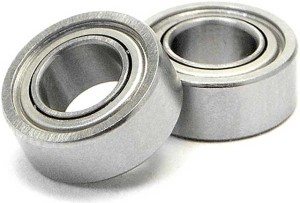
Our motto is “never stop in the face of difficulties,” so we will scrupulously and methodically look for the cause of the malfunction in the old automatic washing machine. We will act in order, first we will inspect the parts that are easier to get to. And then we’ll move on to those that are more difficult to get to. Let's start with the drive belt and pulley.
- Remove the back wall of the washing machine by unscrewing several bolts.
- There will be a large wheel in front of us - this is a pulley.
- We check the pulley for defects; if no defects are found, we move on to the belt.
- The belt is just put on the pulley, it needs to be inspected very carefully; any chips or just severe wear are a reason to replace this element.
If everything is in order with the belt and pulley and there is no need to change them, go ahead and check the counterweight. In a large number of cases, unpleasant sounds are produced by a loose counterweight. How to get to it?
- Opening the top cover of the washing machine
- Under the lid we will see a large concrete block screwed with large bolts to the washing machine - this is the counterweight.
- Inspect the counterweight for wear. Look at the mounting holes.If they are clearly wider than the heads of the bolts that secure the counterweight to the machine, the counterweight needs to be replaced.
Important! To make sure that the counterweight is worn out, shake it with your hands. If you feel that it is loose, you need to change it 100%.
The worst thing is if the cause of the unpleasant sounds lies in a broken bearing in the washing machine. Replacing a broken bearing with your own hands is very difficult. It is necessary to perform a number of complex actions, which in some cases can only be performed well by specialists. Contact a specialist and he will handle this job quickly and professionally.
So, you can answer the question why the washing machine rattles, hums and whistles only when you manage to check everything in order, as we described above. Act methodically, in accordance with the advice of professionals, and you will succeed!
Interesting:
3 reader comments
Add a comment Cancel reply
Categories
Washing machine repair


For buyers

For users

Dishwasher

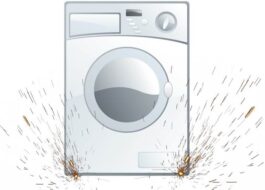
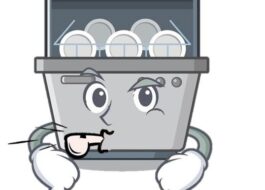
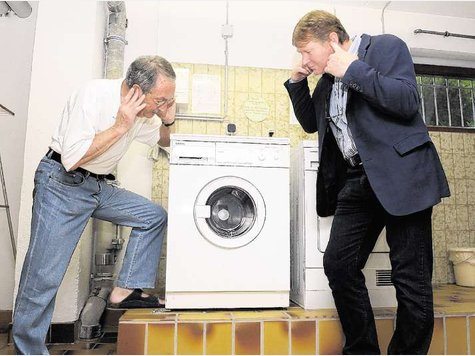
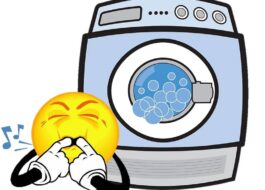
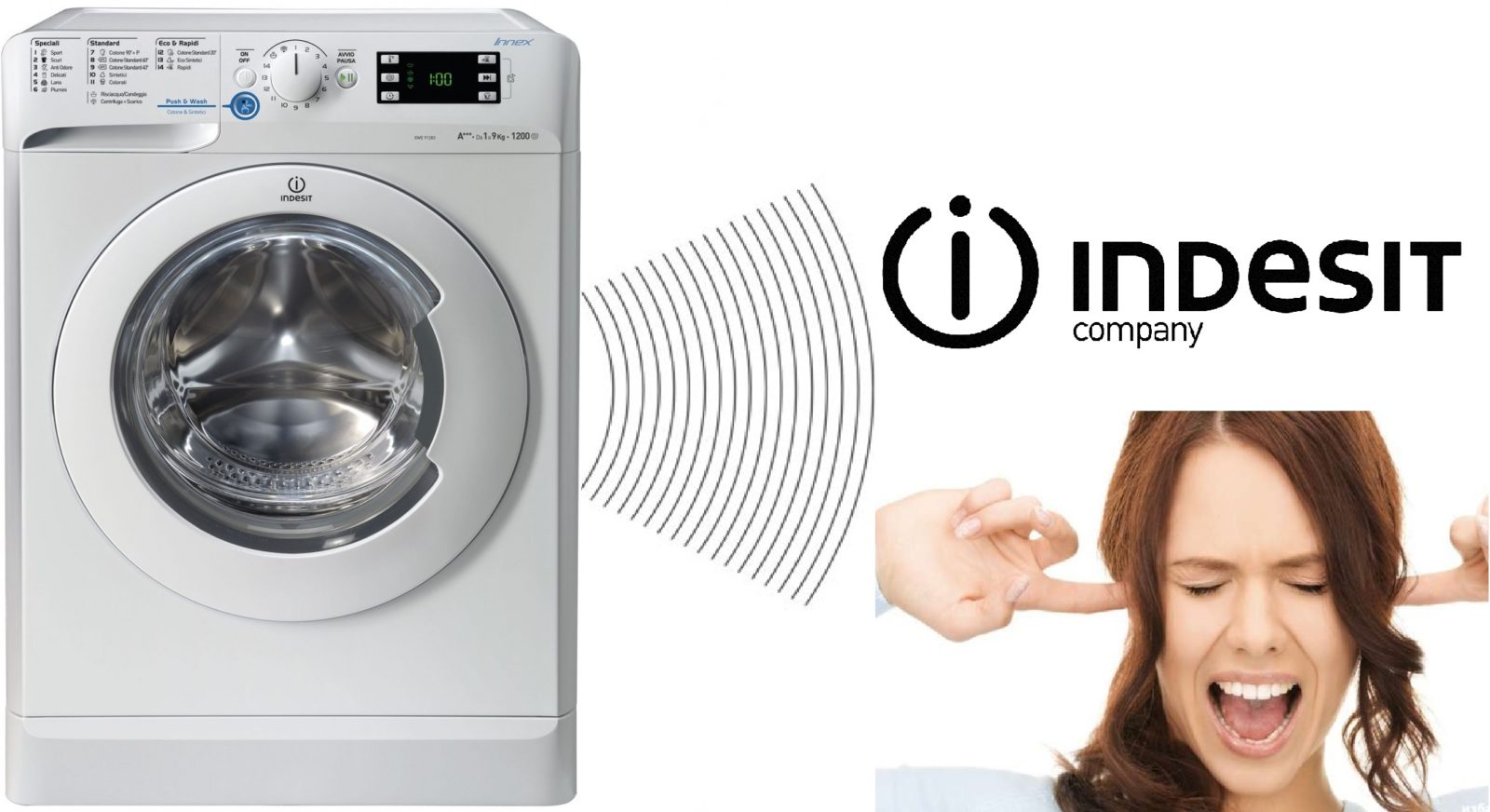
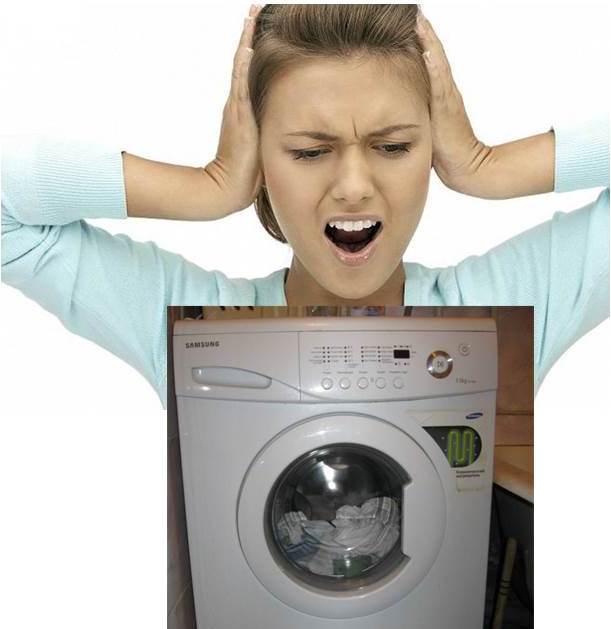










Quite instructive.
Very detailed.
Very informative.